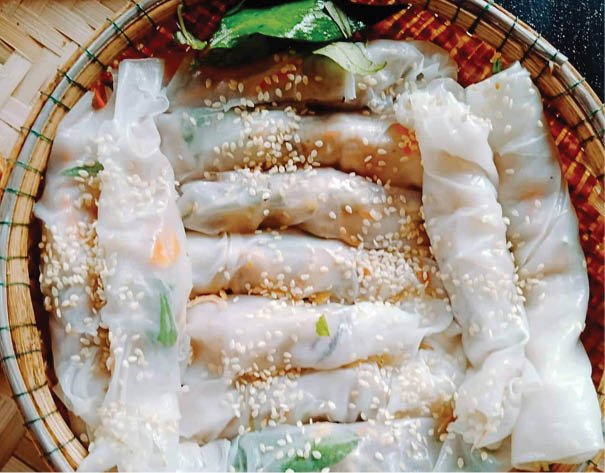
I sat with my brother, a famous martial arts master in Hue. He is often invited to be the judge in martial arts competitions in Hue or in belt testing. Despite being a martial arts master, he loves poetry and writes poems.
Whether the poems are good or not is up to each person’s taste, but one thing is for sure that his poetry has won the Ancient Capital Literature and Art Prize - a competition which is only held every 5 years. Thus, I would not be wrong to say he is accomplished in both literature and martial arts!
Because he is such a calm person, talking with him was very interesting. I listened to many stories and learned many things. From our conversation the day before, two things made me ponder: the story of vegetarianism and the story of pickles.
Vegetarianism exists everywhere, but vegetarianism in Hue has been upgraded to an artistic level. Moreover, it is well-known that Buddhists eat vegetarian food on the full moon, the last and first day of the month (in Lunar calendar), but many Hue people who do not follow the religion are also vegetarians on these days. And, on these days, they avoid killing.
It is not surprising that many Hue people are vegetarians, because Hue is one of the cradles of Buddhism. This land has hundreds of pagodas, including many ancient ones. Buddhist activities are also a long-standing cultural feature of Hue people.
Perhaps this is why the "Zen value" is deeply ingrained in Hue people - gentle, humble, slow, contemplating ... So we see few places which have as many vegetarian restaurants as in Hue. On the full moon, the last and the first days of the month, many regular restaurants switch to selling vegetarian dishes.
It can be said that vegetarian ingredients have become a commodity in Hue. No one has done the statistical research, but perhaps the revenue is not small.

Hue vegetarian dishes are both delicious and eye-catching
A friend of mine told me that whenever her workplace receives guests, especially those from Hanoi, there would always be a vegetarian meal and a Hue cake meal. The general consensus has always been extremely positive.
Hue cakes are delicious; vegetarian dishes in Hue are also delicious, of course. Not only are the dishes delicious but also "eye-catching" and picky in the presentation. Eating has turned in to a form of enjoyment, so everything is small and pretty...
Sometimes a vegetarian meal or a cake meal in Hue would have many small bowls, crowding the table. The image illustrated in this article is of Tinh Khong Quan Hue, located on a small alley on Ba Trieu Street. The restaurant is quite popular. We see how elaborate a 4-person meal is presented. It isnot an exaggeration to say that, cuisine in general and vegetarian cuisine in Hue in particular has elevated to an artistic level.
According to nutritionists, several vegetarian meals a month are also very good for health and good for the balancing of yin and yang – after consuming a lot of meat, one should switch to vegetables. After eating much animal protein, the body also needs plant protein and fiber to rebalance.
The second story is pickles in Hue. Hue is one of the few places that produce the most pickles. There are many kinds of creative pickles. Things which are often thrown away are utilized by Hue people to make pickles and are turned into very delicious dishes.
For example, pickled mustard greens. Many Hue people use old mustard greens leaves which are often discarded to make pickles. Pickled mustard greens with chili powder fish sauce is delicious. Pickled mustard greens is also used to make soup, and is the ingredients to cook with meat and fish.
Popular in small drinking restaurants in Hue is stir-fried beef with pickled mustard greens, beef brisket with pickled mustard greens; stir-fried pork leg with pickled mustard greens... When we did the calculation, we counted many types of pickles: mustard greens, taro stems, banana shoots, bamboo shoots, bean sprouts and aubergines.
After discussing the story of pickles, my craving began. Yesterday, I went home to ask our housekeeper named Chi to stir fry a dish of “plain” pickled taro stems: just with some lard, some garlic and chili powder. The pickled taro stems were still green in color. A steaming plate of pickled taro stems was enough for me to finish a couple bowls of rice.
Story and photos: NGUYEN SON
